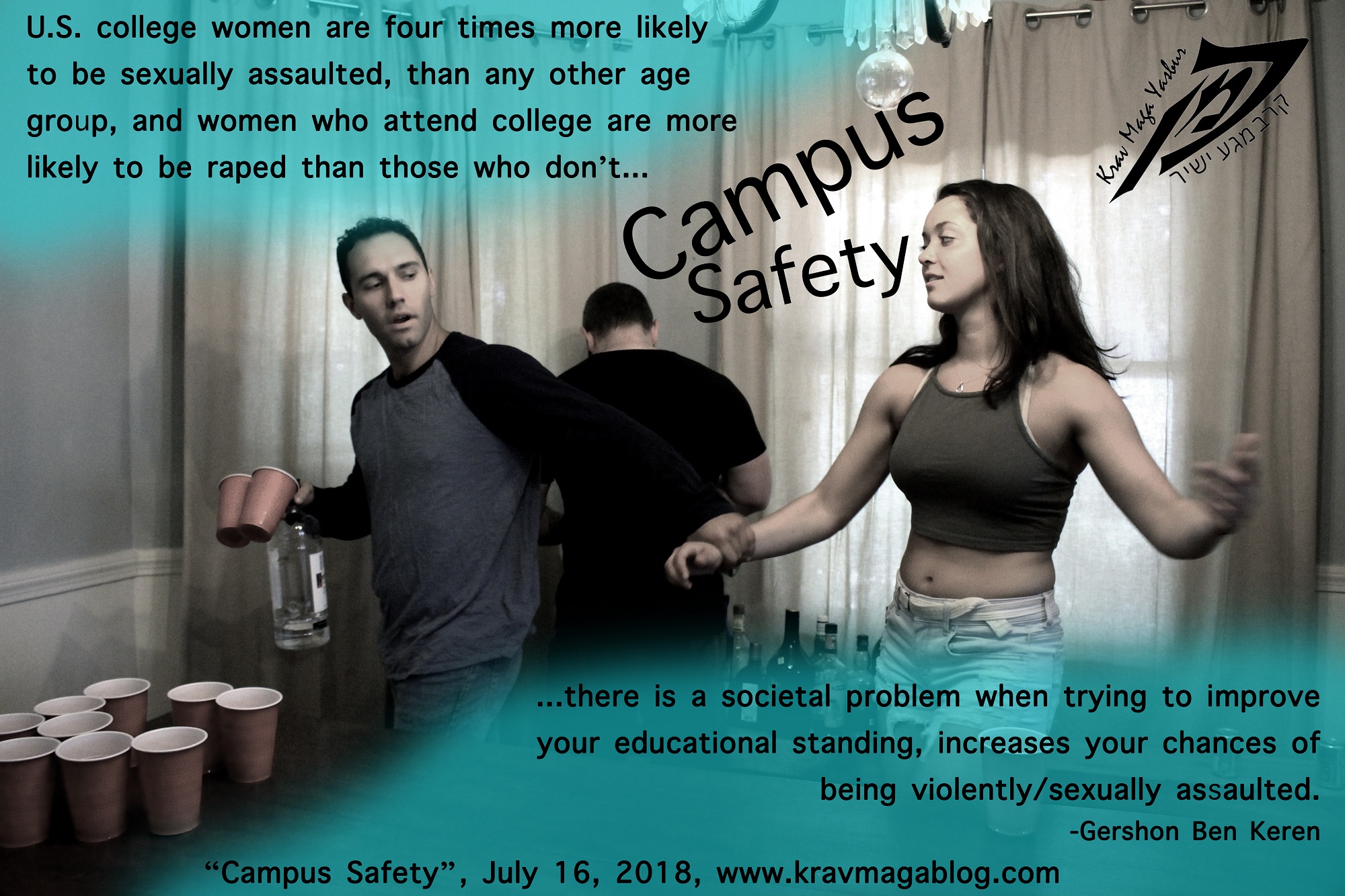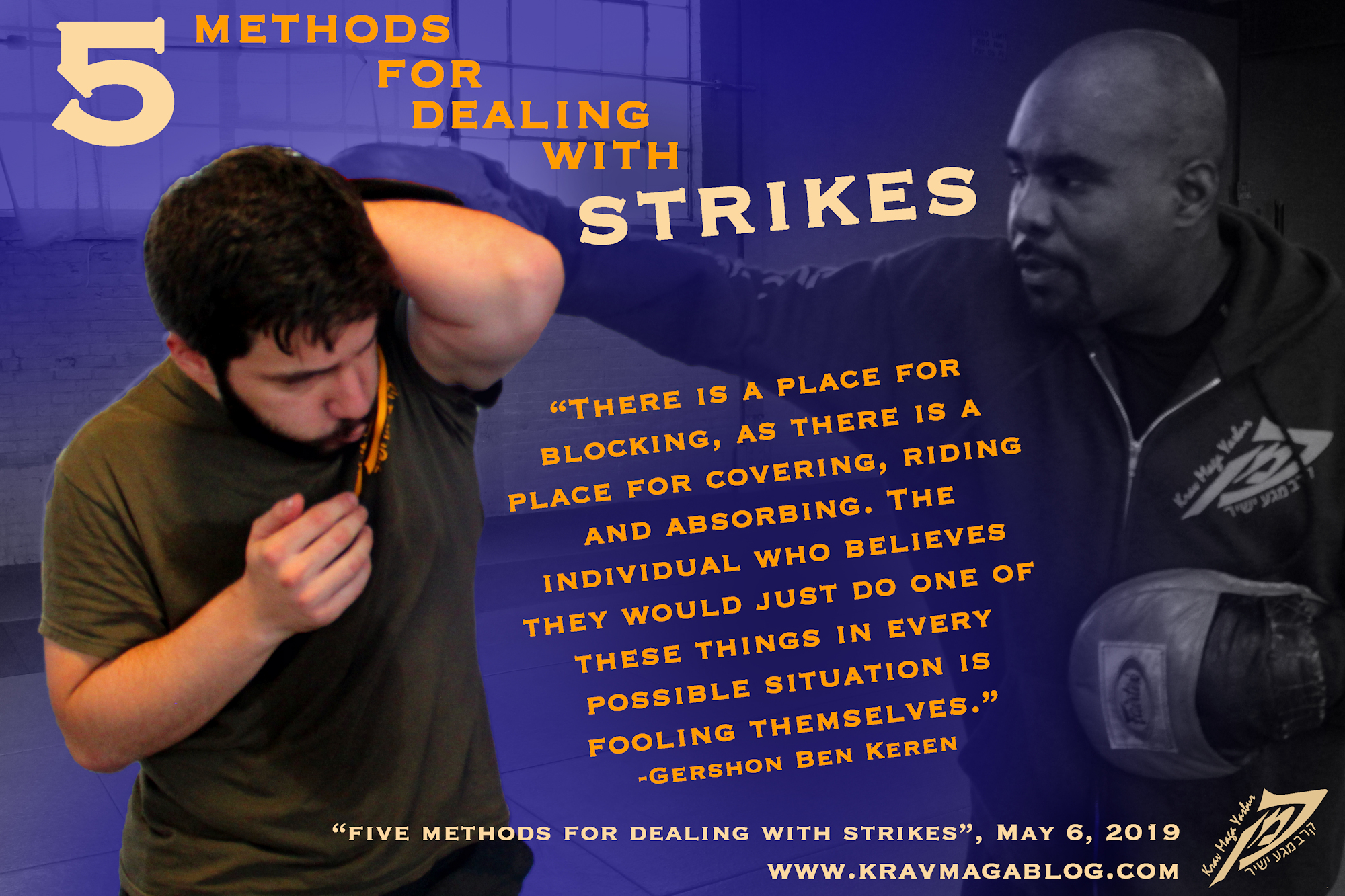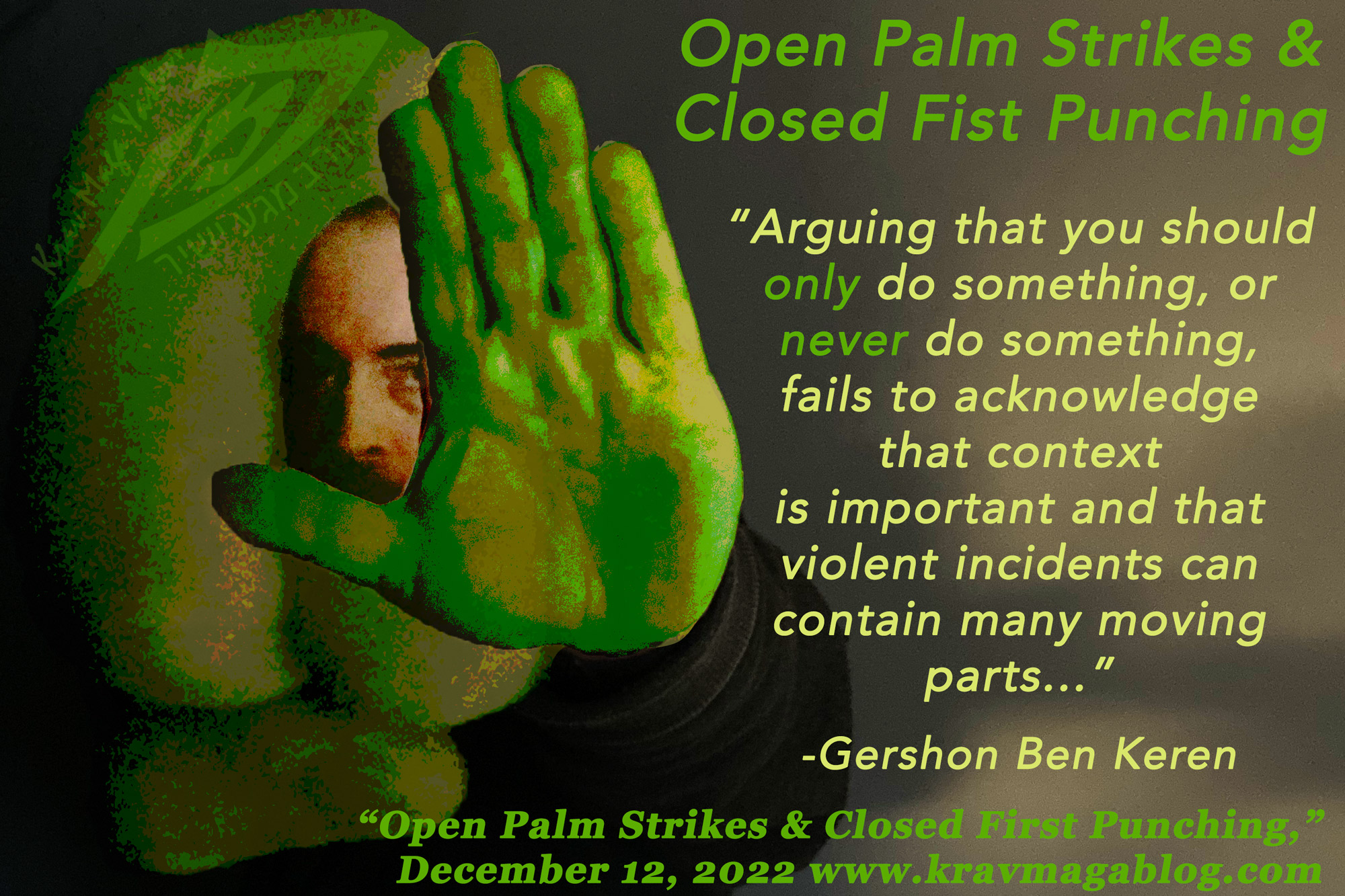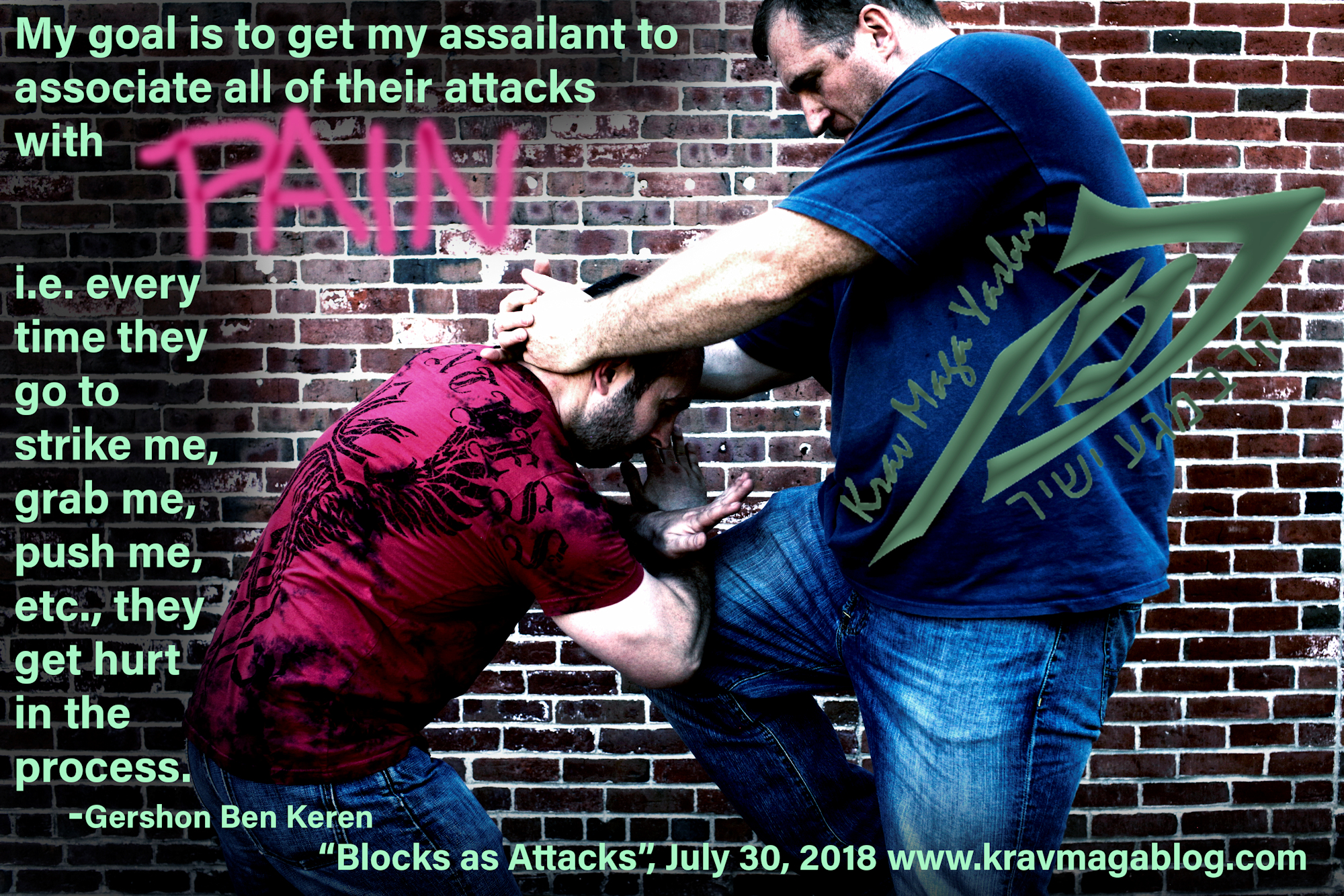Blocks As Attacks (Part 2), is an article written by Gershon Ben Keren, a 5th Degree Black Belt in Krav Maga, who teaches Krav Maga in Boston, MA. He has also authored three Amazon best-Selling Books on Krav Maga.
I’ve never really like the term self-defense. I see it more as a legal term/concept than a descriptor of what occurs in a fight. If you are assaulted, you’re in a fight. And if you’re in a fight, simply “defending” yourself is not enough; there must be some offensive action on your part if you are to successfully survive the altercation. There is a common misconception that certain styles and systems are defensive and attacker-friendly i.e. their intent is not to cause harm to the attacker but merely dissuade them from continuing their assault, with other arts being overly-aggressive and brutal in the way they deal with an assailant. I once had a prospective student tell me how they liked the approach of Aikido and Ju-Jitsu, which allowed an attacker to safely roll away, unharmed, without realizing that most attackers are not skilled in breaking falls, or going with the flow of an attack, etc. and if these defenses were applied against an unskilled assailant it is likely that a joint would break, and/or a concussion would be experienced, etc. Violence is, of course, context-specific, and there may be times to simply break-away from an assailant, or apply pain-compliance before disengaging, rather than delivering concussive force in every situation, however if you are involved in a fight, your goal is to cause pain and/or disable an aggressor in some way; my rule of thumb is to deliver enough force and pain to facilitate a safe disengagement and escape – a heuristic that should help you avoid using excessive force i.e. if things do go legal, and you state that you did what you did in order to get away – and make your disengagement at the earliest opportunity, you will be a much more credible defendant; if it’s a civil suit brought against you, where the burden of proof is much less than in a criminal case, you will need every bit of help you can get (just because you were “right” doesn’t mean what you did was “legal”. In saying all of this, everything you do to survive the incident should be offensive, including your movement and blocking.
Blocking should not be seen as a defensive action. It should be viewed as an attack, on the incoming attack. It shouldn’t simply protect you, but rather it should do something to disrupt and damage your attacker. If I am using an outer defense (a 360-defense), to deal with a circular attack, such as a swinging haymaker, a wide-arcing slash, or a stab, my block needs to do more than simply stop the attack. When I lived back in the UK I used to follow football/soccer and keep up to date with the transfer of players between clubs. Strikers who score goals, are more valuable to a team, than defenders who stop them, and trade for a higher value; as one manager put it, a defender will get you a draw, but a striker will win you the game. The same is true of simply blocking/stopping an attack; it doesn’t get you any further ahead in the fight – to do that you need to attack, and this is what your block should be. When defending a circular attack, I’m looking to slam and drive my forearm into my attacker’s arm. I want to cause them pain. I don’t simply want to protect myself – I should be able to accomplish this goal by controlling range/distance, and my relative positioning to my assailant – but rather use my block as a delivery system to start shutting down both my attacker’s ability to use their arm, and their desire to do so. If I can cause them to be hesitant in their following attacks because of this, my blocks are getting me something more than a draw.
My goal is to get my assailant to associate all of their attacks with pain i.e. every time they go to strike me, grab me, push me, etc., they get hurt in the process. This interrupts their expectations, causes hesitancy, and may even result in reluctance, and an under-commitment concerning their attacks. When defending knee strikes, I’m ramming my forearm (reinforced with the other arm – as the incoming leg is much stronger than the arm), into the quadricep muscle of the upper leg; I’m not blocking the knee strike, I’m attacking it. Trying to catch the leg without causing this moment of pain, and interrupting the recoil of the leg because of it, is next to impossible. If I’m not able to catch the leg this time, I know that the next time the knee comes in, it’s likely to be less committed and a little bit slower, due to both the physical trauma caused, and the attacker’s anticipation of pain. Of course, there will be people who are impervious to pain, because of drugs, alcohol, adrenaline, conditioning and inherent pain tolerance, and I’ve also encountered people who were too stupid to realize they should have been hurt, etc., however, my goal should be, that when they contact me, and I contact them, they—rather than me—experience pain. This should be true with actions that aren’t normally associated with causing pain e.g. If I grab on to somebody, I should be looking to inflict pain with my grab, rather than simply taking hold, etc.
No person should relish the opportunity of inflicting pain on another; if you do I would argue that you’ve taken the wrong message from your training. Every time I have had to, it’s depressed me afterwards, i.e. it’s never been satisfying, even when someone “deserved” it. However, when assaulted and/or attacked, delivering pain to those involved is usually the fastest and most conclusive way to deal with them – most people emotionally crumble when they feel pain, even if the force/power involved isn’t concussive. Blocks, should not be viewed as defensive tools, but as attacking ones that allow you to join/blend with your aggressor, and cause them to reevaluate their role in the fight.
0 COMMENTS















